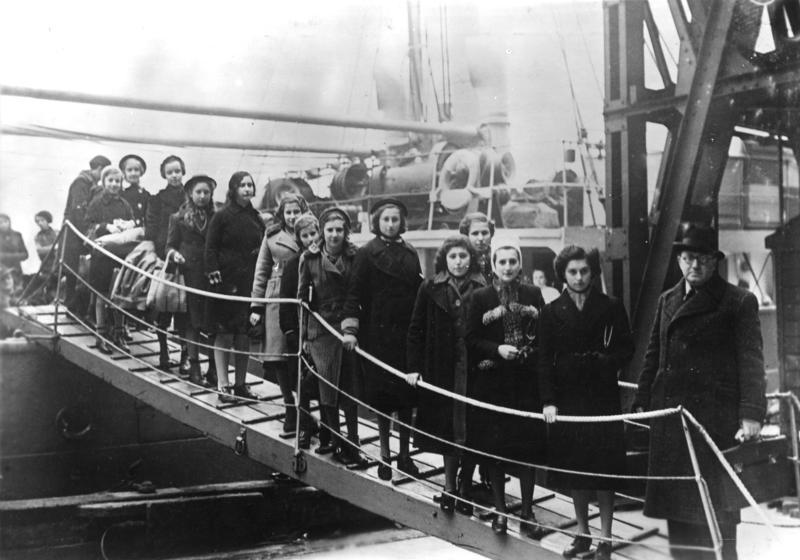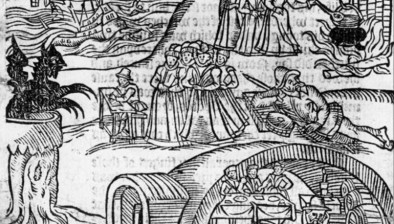Gillian Mawdsley: The child refugees of the Kindertransport

Jewish refugee children on their arrival in London on the Warszawa
Credit: Bundesarchiv, Bild
Gillian Mawdsley writes about the Kindertransport ahead of Holocaust Memorial Day tomorrow.
As another Holocaust Memorial Day (HMD) approaches, the recent release of the film One Life allows for reflection on how child refugees were able to escape Nazi persecution. This resonates with this year’s HMD theme of the fragility of freedom where these child refugees arrived, without anything, having fled of necessity from their home land.
That film records the efforts of Nichloas Winton, who while acting with others, rescued 669, mostly Jewish, children from Czechoslovakia prior to outbreak of World War Two. One Life seeks perhaps somewhat emotively to illustrate how Nicholas Winton’s actions in saving these children came to public acclaim through the auspices of the BBC TV programme That’s Life. During the programme, the audience there stood to acknowledge their survival due to Nicholas’ Winton’s work, being either the kinder survivors themselves or their descendants who had escaped.
The rescue of children from Nazi persecution in which Nicholas Winton played his part is now known as the Kindertransport. Approximately 10,000 children, mostly Jewish, were sent on transports from Nazi Germany and Austria, Czechoslovakia and later Poland, between December 1938 and September 1939.
This article considers the historical and legislative background In Great Britain generally in relation to refugees and specifically, as it affected those fleeing Nazi Germany in the thirties. The issues regarding reluctance over their admission as refugees to Great Britain are still pertinent today. These can be seen from the current debates in the UK Parliament on refugee question and specifically, with the discussions on the Safety of Rwanda (Asylum and Immigration) Bill.
How to define who a refugee is the starting point. Then it considers how legislation evolved to deal with this thorny and contentious issue. Why did Great Britain then admit these children? There may now be an acceptance that Great Britain opened its arms willingly to save these refugees from the Nazi persecution of the Jewish people. However while the Kindertransport may now be lauded as a successful humanitarian exercise, which it was, considering how and why the government policy evolved towards admitting Jewish child refugees and its impact is relevant today and at the time of HMD.
Who is a refugee?
Looking to the English dictionary definition, it is “a person who has been forced to leave their country in order to escape war, persecution, or natural disaster”. Refugees had “drifted across the world, uprooted from their homes, penniless, destitute, [with] no country found ready at hand to receive them, separated from their families” and “many of them have been men of intellectual eminence who felt that their life’s training had been wasted” with no future to undertake work where they had lived”.
How did the law develop to deal with refugees?
Until 1905 the arrival of refugees was largely unregulated. The Aliens Act 1905 which repealed the Registration of Aliens Act 1836 sought under section 1 to prevent the landing of undesirable immigrants. Subsection 3 stated that an immigrant was to be treated as an undesirable immigrant if they:
- cannot show that they possess or were in a position to obtain the means of decently supporting himself and his descendants or
- were a lunatic or idiot or owing to any disease or infirmity appears likely to become …..a detriment on the public or
- were sentenced in a foreign country or an expulsion order had been granted.
There were requirements to be financially viable, in good health and of economic benefit to the country. There was a provision that those claiming persecution for religious or political reasons were not automatically refused entry if they were not able to prove that they could support themselves. The 1905 Act was passed in response to the persecution of Eastern European Jews and their forced migration, mainly then from the Russian Empire.
The Aliens Restrictions Act 1914 followed in response to the outbreak of World War 1. It allowed for the imposition in the time of war, imminent national danger, or great emergency of restrictions on enemy aliens. This included the requirement to register with the police, allowed for deportation, and restrictions on where refugees lived. The Aliens Restriction (Amendment) Act 1919 continued the powers of the 1914 Act to include restrictions on employing aliens in the merchant service and exclude them from working in the civil service.
In the 1930s, that was the legislative position that controlled the entry of refugees from Nazi persecution.
How was Kindertransport allowed to work?
Over the 1930s, there was growing awareness of Nazi persecution but continuing reluctance from Great Britain to admit refugees. Concerns reflected that there was a limit to the numbers that could be admitted but larger number of refugees could be absorbed were they were eventually to be settled in some other parts of the world that included Tangayika and British Guyana. That may sound a somewhat familiar policy. The stress was still on those who could be selected to fall in age groups that were capable of being self-supporting, loyal citizens, in good health and with technical skills.
However, by 8th November 1938 (Kristallnacht and the organised violence against the Jewish people), families had had enough and wanted to get their children out to avoid that increasing violence, fearing what was to follow. That violence as history records, culminated in the Final Solution devised at the Wannsee conference in 1942, a conference that developed and implemented the policy of extermination of the Jewish people.
Accordingly, public demand for action grew. On 15th November 1938, British Jewish leaders met the then Prime Minister Neville Chamberlain to appeal directly so that children and teenagers up to the age of 17 could be admitted. Parliament went on consider what was to be done in an energetic debate on 21 November 1938.
Mr Philip Noel- Baker MP reported on the background to Kristallnacht that the refugees “had surely suffered enough”. Mr Maxton MP with perhaps an early nod to human rights suggested that the question was how to give these refugees the same opportunities in the world as “we have”.
When Sir Samuel Hoare, the home secretary, concluded the debate, he recognised the huge demand on the passport office in Vienna and Berlin since Kristallnacht had been stretched to its limits. The Co-ordinating Committee outlined that children whose maintenance could be secured either by their own funds or generous individuals could be allowed to access necessary visas to allow entry to Greta Britain.
There was still a need for them not to be a drain on this country’s resources. Though this was described as a chance to mitigate the suffering of their parents and friends, it was in effect a visa waiver scheme and not a change in legislation which allowed their escape. There was no such route for their parents who were still subject to existing laws. There was still a need to avoid harm in numbers of refugees to this country. The dilemma being faced by Jewish parents in taking such action can only be imagined as they sent their children into the unknown.
The House concluded their debate that a motion recording “with profound concern the deplorable treatment suffered by certain racial, religious, and political minorities in Europe, and, in view of the growing gravity of the refugee problem, [that they] would welcome an immediate concerted effort amongst the nations, including the United States of America, to secure a common policy”. That appeal to the USA was ultimately not successful. Importantly, Great Britain had found a solution to allow some children to come.
In conclusion, before 1988, no one had heard of the Kindertransport. Now it recognised as having an important part of British history. In commemorating HMD, this Parliamentary debate led to these children received freedom to move, enter and live in Great Britain. They lost much but gained the right to live.
And Great Britain could then be seen in humanitarian terms albeit in a limited but vital way to have in the forefront among nations of the world in giving relief to those suffering people.









